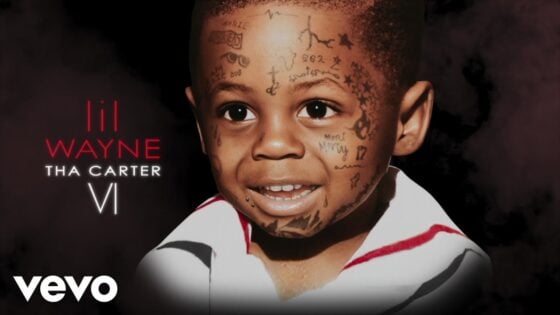Film
Dark City Still Dazzles and Mystifies
‘Dark City’ has remained a darling of genre movie geeks, the poster-child for underappreciated gems, and a triumph of production design, atmosphere, and storytelling.
20 Years Later: Dark City
Monochromatic buildings jostle one another against a forever dark skyline. Bulbous but still streamlined cars — nary a one with a manufacturing date past 1959 — sit stuck in near-constant traffic, their tired-looking drivers always returning from work, but never heading there. Arc-sodium streetlights flicker, occasionally capturing the fleeting image of a group of pale figures, like Nosferatu in trench coats and fedoras, as they go about some sinister business. Welcome to the world of Dark City, a physical and metaphorical labyrinth.
The film opens with a conceit some may find cliche: an amnesiac man awakens in an unfamiliar environment. It’s not a new or particularly innovative set-up, but this is at least the film’s only real dalliance with convention. The man, who quickly learns his name is John Murdoch, shares the audience’s puzzlement at his surroundings — a city of looming buildings, shadowed alleys, and a veneer of 1940s aesthetics. Given the minor detail that the hotel room he woke up in was also occupied by a brutally murdered woman, he also has the cops on his tail, and something more sinister besides: a group of mysterious men with even more mysterious powers.
The third feature film by Australian director Alex Proyas wasn’t as beset with production woes as its predecessor, The Crow, but it wasn’t an easy shoot either. The studio was nervous from the get-go, worrying that Proyas’ sci-fi/noir mashup wouldn’t find an audience, and would hopelessly confuse what viewers were lured in. In a desperate move to make it more “accessible,” they hounded Proyas to dumb it down, eventually pressuring the director to place a monologue at the start of the film that essentially spoils the secret at the heart of the story. Dark City was then somewhat buried upon release, only screening at 1,700 theaters nationwide.
It did find praise and adoration with critics, however, and thanks to its home video release, including a director’s cut that removes that pesky opening narration, it’s since become a cult darling.
But what makes Dark City so special?
Aesthetically, the film is an utter marvel, a blend of the exaggerated shapes and forms of German expressionism with the endless shadows of film noir. The deeper we venture into the literal and metaphorical underworld, the more new elements begin to intrude — surrealist sights, like buildings and streets morphing into new shapes, or the sinister Strangers’ underground lair, which feels like a demented collaboration between Jean-Pierre Jeunet and Clive Barker. The production design behind Dark City is something that can and has been extensively written about, a labor of love that infuses even the tiniest prop with character. A massive, city-sized set was built for the shoot, taking up a massive chunk of the budget. Given that the whole endeavor might have fallen apart if the titular city wasn’t a striking and memorable backdrop, it was clearly worth it.
The characters inhabiting this landscape can often be as exaggerated as the world around them. Murdoch, played by Rufus Sewell, spends much of the film as a stammering, wide-eyed wreck, while William Hurt dishes out one-liners and knowing grimaces as a hard-bitten detective on Murdoch’s trail. Kiefer Sutherland’s Dr. Schreber, a human collaborator of the Strangers, is definitely more on the caricature side of things, with a halting speech pattern and nervous manner clearly modeled on Peter Lorre’s oft-parodied style. Richard O’Brien makes a fantastic villain as Mr. Hand, the most prominent of the film’s pale antagonists (there’s certainly a fair deal of Rocky Horror camp in O’Brien’s raspy voice). And of course, there’s Jennifer Connelly, captivating as usual, in the slightly underdeveloped part of Emma, John’s estranged wife.
Dark City is often said to have been overshadowed by The Matrix, a slightly tenuous argument since the latter came out a year later and tries to accomplish something appreciably different. However, both films do deal with some similar themes: an awakening to the hidden nature of the world, the idea that our lives are controlled by shadowy, sinister figures who can manipulate the environment itself at will. The hero, having awakened to this reality, reclaims his agency by overthrowing the yoke of control thanks to an innate power he gradually unlocks. Similar idea, but significantly less kung-fu and gunplay.
Dark City is also much less interested in digital-age paranoia than it is with a somewhat more Kafka-esque tumble through a hostile, mercurial system of oppression and disempowerment. Like Joseph K, jerked about by the invisible and seemingly chaotic strings of a bureaucratic nightmare, Dark City’s John Murdoch spends much of the film hopelessly lost, antagonized by a seemingly unknowable and hopelessly mercurial world. The film’s bombastic finale, a sudden explosion of action and chaos on an Akira-like scale, breaks from the flirtations with any Kafkaesque ideas, however (unless the lost ending to The Trial saw Joseph K in a telekinetic battle of wills with his prosecutor, that is).
Dark City is the kind of film that cinephiles root through old, lesser-known genre films looking for, one clearly ahead of its time and made with a lot of love and craft. It’s the perennial cult film, overlooked in its era and harried by that ever-reliable villain, the meddling studio. In the two decades since its release, Dark City has remained a darling of genre movie geeks, the poster-child for underappreciated gems, and a triumph of production design, atmosphere, and storytelling.

































